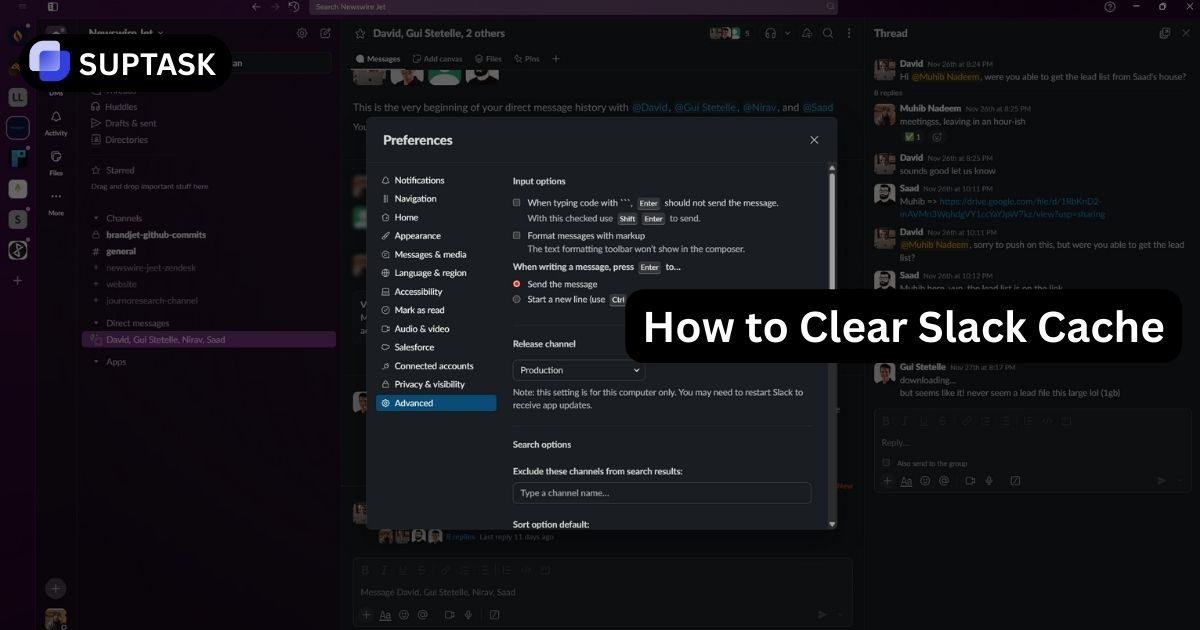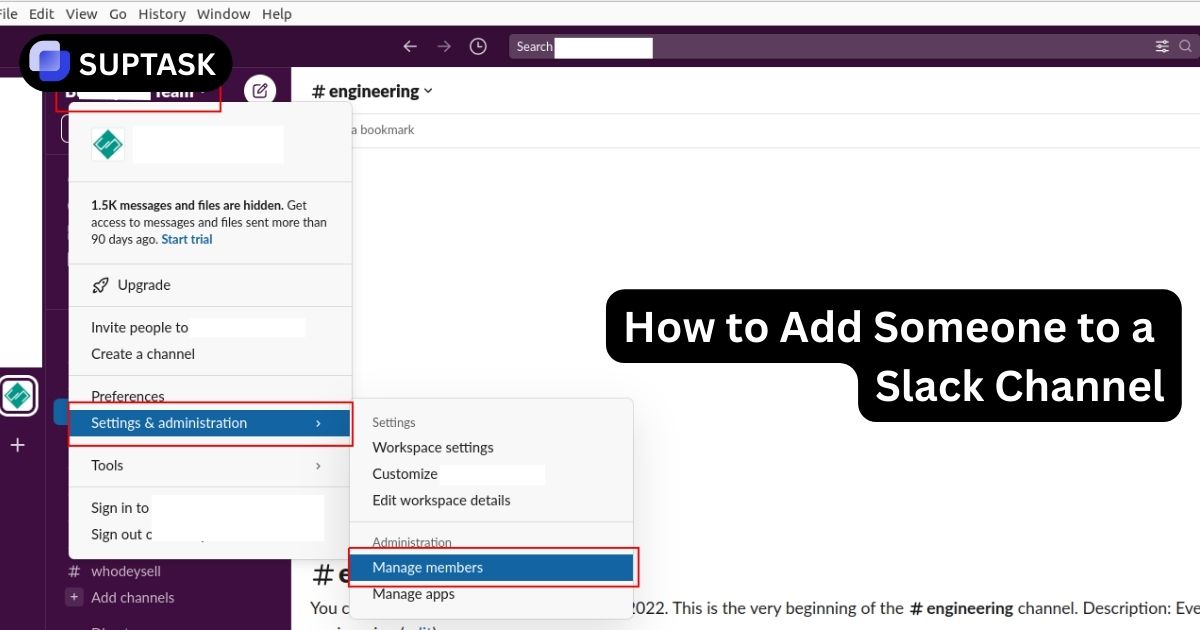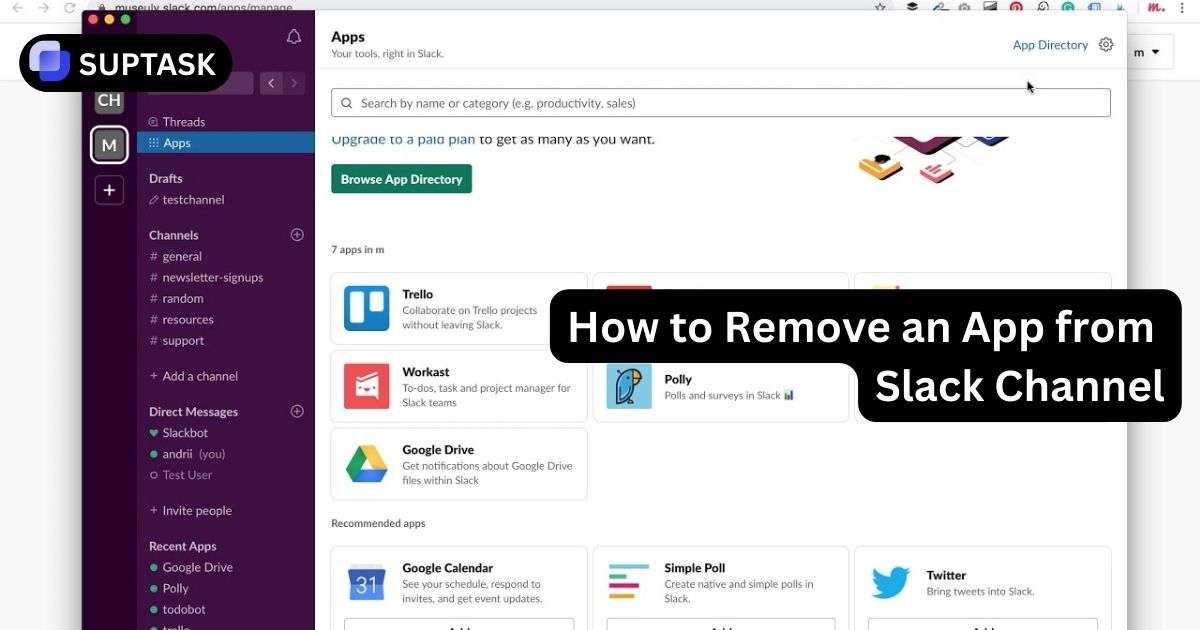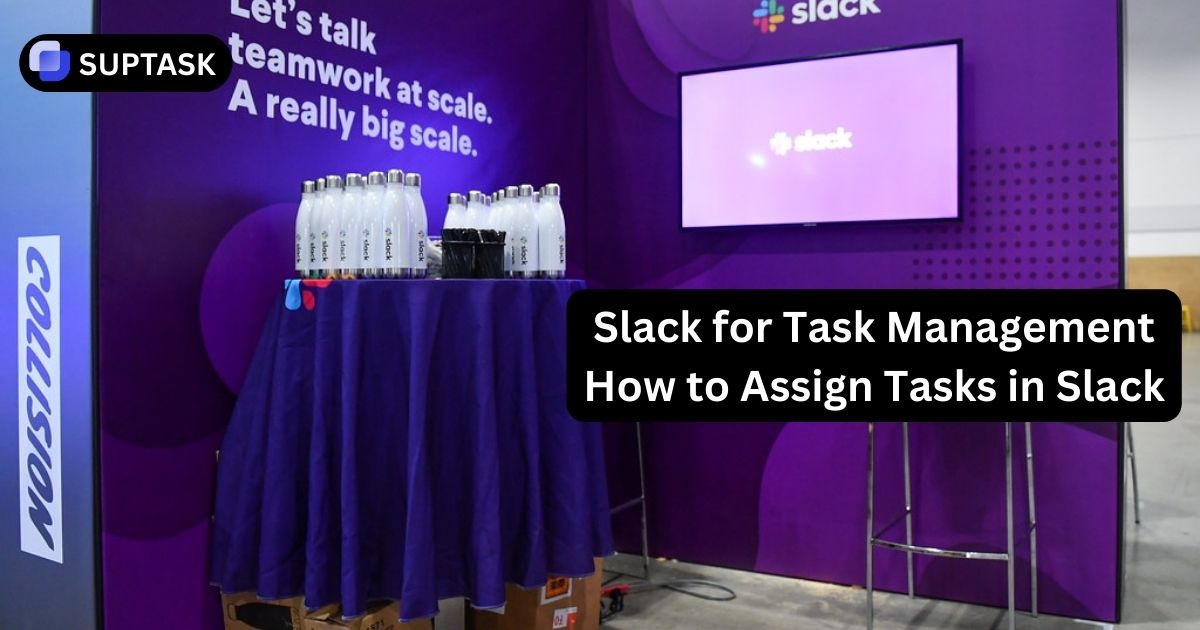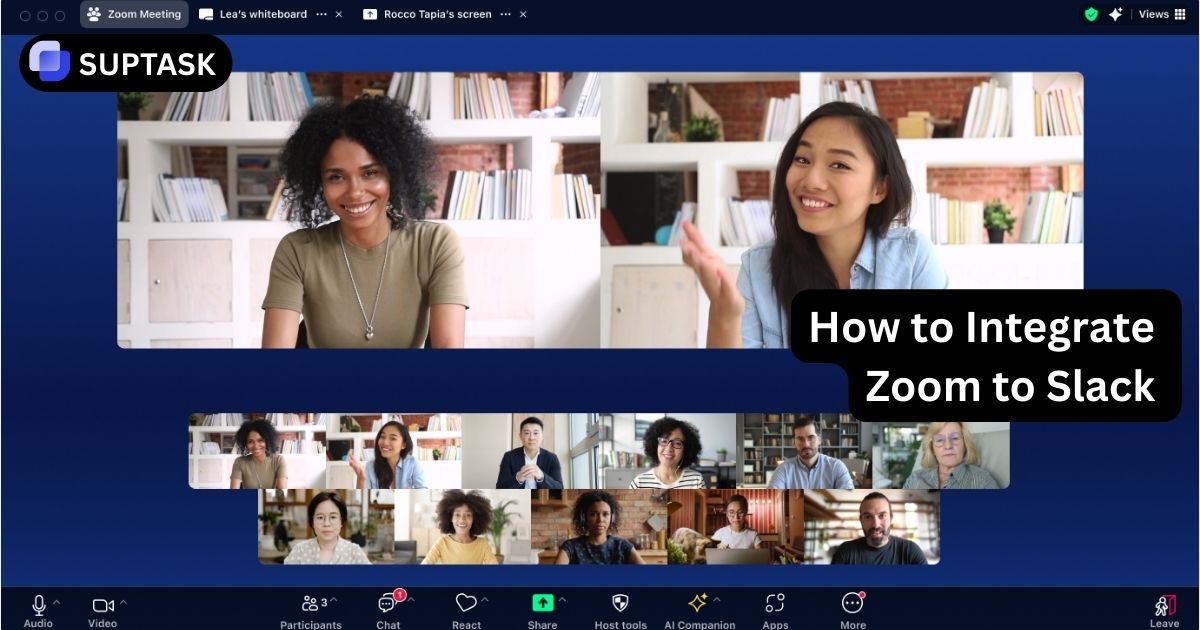This article outlines the precise actions needed to make Slack a secure platform for managing Protected Health Information and answers, “Is Slack HIPAA compliant?”
Key Takeaways
- Slack is not inherently HIPAA compliant but can be tailored for compliance through upgrades to the Enterprise Grid plan, signing a Business Associate Agreement (BAA), incorporating heightened security measures, and user-end configurations tailored to HIPAA standards.
- HIPAA compliance on Slack requires meticulous management of user access and permissions, data flow and storage controls, as well as regular audits and employee training on the secure usage of Slack for handling Protected Health Information (PHI).
- Utilizing Data Loss Prevention (DLP) strategies is essential to ensure ongoing HIPAA compliance within Slack. Enforcing message and file restrictions and implementing standard procedures for channel naming, role assignments, and third-party integrations is critical.
Understanding Slack's Position on HIPAA Compliance
.webp)
Slack, the famous collaboration hub, isn’t inherently HIPAA compliant.
Users are responsible for ensuring their usage complies with HIPAA's strict guidelines. That being said, if you're willing to put forth a bit of work, Slack can help with HIPAA compliance.
To start with, you need to:
- Sign a business associate agreement (BAA) with Slack. The standard Slack platform doesn’t cut it in terms of HIPAA compliance. You’d need to:
- Upgrade to an enterprise-level plan.
- Make additional configurations to ensure that your Slack usage adheres to HIPAA regulations.
Slack’s Enterprise Grid offers the necessary security and compliance capabilities for HIPAA compliance, but additional measures from the user’s end are still required.
How To Achieve HIPAA Compliance on Slack
.webp)
Achieving HIPAA compliance on Slack isn’t rocket science if you know the proper steps. It starts with transitioning to the Enterprise Grid plan, signing a BAA, and adhering to specific procedural requirements.
Let’s dive deeper into each of these steps.
Enterprise Grid Plan
Slack’s Enterprise Grid, designed especially for large organizations, is the only version that supports HIPAA compliance. Although, it’s not a one-size-fits-all solution. You have to implement specific controls to make it comply with HIPAA regulations.
The Enterprise Grid has advanced security features, such as data encryption at rest and in transit. It also offers retention features that enable the creation of an audit trail for compliance. To further enhance protection, it is crucial to implement security tools within the enterprise grid.
The compliance capabilities of the Enterprise Grid allow secure management of Protected Health Information (PHI) by controlling data flow and storage. It also supports HIPAA-compliant collaboration in Slack Connect channels.
Establishing a Business Associate Agreement with Slack
A Business Associate Agreement (BAA) is a crucial piece of the puzzle in creating a HIPAA-compliant chat environment on Slack. It’s a contract that outlines the responsibilities of both Slack and your healthcare organization in maintaining HIPAA compliance.
Before using the Enterprise Grid for PHI activities, you must sign a BAA with Slack. According to the BAA, Slack assumes the role of a business associate when it is used to transmit, upload, or discuss PHI.
The BAA also stipulates that PHI should be included in Slack only within messages and files and explicitly states that Slack should not serve as the system of record for health information.
Customize Slack for HIPAA Compliance
Customizing Slack for HIPAA compliance involves more than just flicking a switch. It’s about incorporating secure measures, data encryption, and integrating Data Loss Prevention (DLP) tools. Slack’s security governance includes measures like:
- Network security
- Server hardening
- Administrative access control
- System monitoring
- Logging
- Alerting
Understanding insurance portability and accountability is crucial for HIPAA compliance and the Accountability Act, especially when considering Slack HIPAA-compliant solutions.
The Slack Enterprise Grid Plan offers the following features:
- Detailed access logs
- Remote termination of connections
- Offsite backups
- Compliance with NIST standards, SOC2, and SOC3
- Ability to leverage the services of DLP providers to monitor messages and files across Slack channels and quarantine and remove non-compliant content in near real-time.
Proactive Measures: Maintaining HIPAA Compliance in Daily Operations
.webp)
It’s essential to maintain HIPAA compliance in daily operations. This involves:
- Consistent channel naming
- Utilizing DLP strategies
- Enforcing message and file restrictions
- Assigning roles and responsibilities
Regular Audits and Employee Training
Regular audits and employee training on HIPAA compliance and safe Slack usage are essential for safeguarding PHI.
Covered entities must routinely train employees on HIPAA compliance and the safe usage of Slack. This includes correct Slack configuration, using custom tools to warn of PHI deletion, and understanding user permissions to minimize data exposure events.
Continuous data monitoring platforms like Nightfall DLP can assist in the automatic detection and remediation of unprotected sensitive data, thus supporting HIPAA compliance efforts in Slack and reducing data exposure risk.
Tools offering alerts and analytics, such as DLP solutions, are critical for tracking and understanding data risks and employee behavior, especially for only authorized personnel access.
Delete old messages automatically
Deleting old messages automatically is a proactive measure to maintain HIPAA compliance. Automated deletion policies within Slack enable the removal of sensitive information and the deactivation of accounts that are no longer in use, thus helping to safeguard PHI.
Slack supports compliance efforts by allowing organizations to set expiration dates on guest accounts and automatically delete messages and files after a pre-defined period.
Managing the time data remains available on Slack is crucial in reducing the risk of PHI breaches, as excessive data retention can lead to unauthorized access.
Consistent Channel Naming Protocols
Implementing consistent channel naming conventions in Slack can help maintain HIPAA compliance by preventing accidental sharing of PHI. Here are some guidelines to follow:
- Channels should be distinctly named to serve specific functions.
- Channels should have minimal overlap in content to reduce confusion.
- Avoid using channel names that could potentially expose PHI.
By following these guidelines, you can ensure that your Slack channels are organized and secure.
Establishing a clear channel naming guide is crucial for healthcare organizations on Slack to:
- Prevent unintentional PHI sharing
- Differentiate channels where PHI can be safely shared and discussed from those where such information should not be present
- To prevent accidental exposure, exclude PHI from specific fields, such as channel names.
Enforcing Message and File Restrictions
Enforcing message and file restrictions in Slack involves using Discovery APIs and external DLP providers. To implement these restrictions in compliance with HIPAA regulations, customers must utilize Slack’s Discovery APIs in conjunction with an external Data Loss Prevention (DLP) provider.
Private channel settings should be employed to limit access to and sharing of PHI within Slack, ensuring that only authorized individuals can view sensitive information.
Also, managing the duration that data remains available on Slack is crucial in reducing the risk of PHI breaches, as excessive data retention can lead to unauthorized access.
Third-Party Integrations and External Collaborations
Navigating third-party integrations and external collaborations requires continuous monitoring, risk assessment, and secure use of Slack Connect channels.
Third-party risk management is a critical component of HIPAA compliance, as vendors must be evaluated and monitored to ensure their security vulnerabilities do not violate HIPAA’s Security Rule standards.
Scrutinizing Third-Party Application Providers
Scrutinizing third-party application providers involves assessing their HIPAA compliance, security features, and the possibility of executing a BAA.
Healthcare organizations must separately assess HIPAA compliance when connecting their Slack workspace to any third-party apps, as Slack does not enter into BAAs with these apps.
When evaluating third-party applications, healthcare organizations need to consider the following:
- The type of data handled, including customer data
- Built-in security features
- The vendor’s familiarity with HIPAA
- The possibility of executing a BAA with the vendor
As third-party vendors can update their terms of service and privacy policies, healthcare organizations must continually monitor for any changes that might compromise PHI protection, including health insurance portability.
Securely Using Slack Connect Channels
Securely using Slack Connect channels requires adherence to the BAA and avoiding direct communications involving PHI with patients, families, or employers.
The BAA with Slack outlines specific limitations for using the platform, including the appropriate use of Slack Connect for collaborations that involve PHI.
Under the BAA, Slack Connect channels cannot be utilized for direct communications involving PHI with patients, their families, or their employers.
To adhere to HIPAA compliance when using Slack, PHI should not be included in features like emojis, status updates, or other non-channel-related elements.
Alternatives and Considerations: When Slack Isn't the Best Fit
What if Slack isn’t the best fit for your organization’s needs? Fortunately, there are HIPAA-compliant alternatives to Slack like:
- Trillian
- OhMD
- Revenue Well
- Luma Health
- Help Scout
- Rocket.Chat
- TigerConnect
- Klara
- Spok
When considering alternatives like Microsoft Teams, healthcare organizations must be mindful of potential costs, mainly if the plan includes features not required by the provider or if used by a small number of users.
Each alternative platform to Slack offers different features that cater to various needs in healthcare communication, such as Help Scout’s live chat widgets, Rocket.Chat’s file sharing, and Twilio’s versatility across live chat, SMS, and video conferencing.
FAQs
Is Slack free HIPAA compliant?
Slack is not free HIPAA compliant; it requires healthcare users to configure the solution to ensure HIPAA compliance. It only supports HIPAA-compliant communications, and it is not HIPAA-compliant by default.
Is Slack Hitrust certified?
Slack is not HITRUST certified, but it meets other compliance standards such as HIPAA, SOC 2, and ISO 27001 that enable its use in healthcare settings.
What are the privacy concerns of Slack?
The privacy concerns of using Slack include the potential for sensitive customer information, passwords, company credit cards, and IP addresses to be exposed in direct messages and channels, posing a significant risk to businesses. It's crucial to carefully consider the security implications of using Slack.
Is Discord HIPAA compliant?
Discord is not HIPAA compliant due to its ability to access user messages and information, which violates HIPAA's privacy requirements.
What is a Business Associate Agreement (BAA)?
A Business Associate Agreement (BAA) is a contract between a healthcare organization and a service provider, such as Slack, that outlines their responsibilities in maintaining HIPAA compliance. This ensures the protection of patient information.



